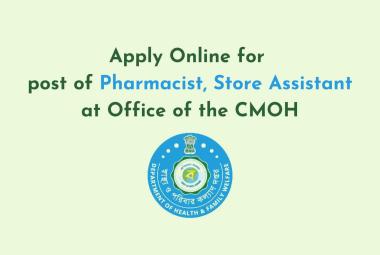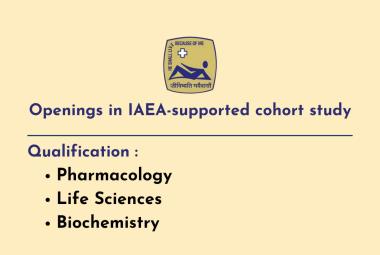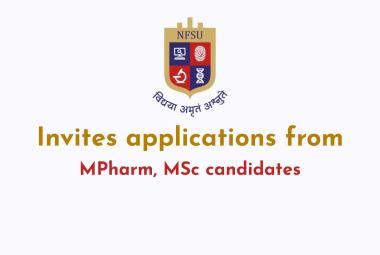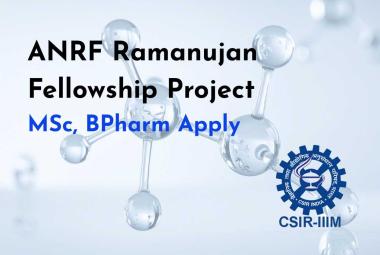ABOUT AUTHORS:
A.Anil kumar, K.Surekha, M.Sujatha Kumari
Department of Pharmaceutics
Vikas college of pharmacy, Vissannapeta, 521215
*anilkumar.adi@gmail.com
ABSTRACT:
The objective of the present study of Diclofenac sodium was to treat inflammatory bowel disease in colon. Treatment for IBD is a long term therapy the colon drug delivery system of Diclofenac sodium to the colon provides the following benefits. Avoidance of first pass metabolism, to target local site. The tablet formulation of Diclofenac sodium provides time controlled release to treat the nocturnal symptoms of pain in colon. The formulation is administered in the night at 10 pm the action will be start early morning 3’0 clock Symptoms that are experienced in early morning hours should be avoided to maintain the lag period of drug release 5hrs. To maintain lag time the best method is pulsein cap drug delivery system and it is high expensive, poor in vivo correlation. Due to cost effectiveness and poor in vivo correlation we preferred to target colon as tablet dosage form. In the present study, the polymer selected as Guargum. Granules were prepared by wet granulation technique using Guargum in different ratios (drug: polymer) FG1 (1:0.25), FG2(1:0.5), FG3(1:0.75), FG4(1:1), FG5(1:1.25). To perform the interaction studies by IR spectra studies. To study the influence of polymer concentration on the Diclofenac sodium release from tablets. The prepared tablets were evaluated for different physical parameters and dissolutions studies were performed in 3 dissolution mediums like 0.1N hydrochloric acid for 2hr, pH 7.4 for 3hr, pH 6.8 up to 24hrs. Among all these formulations FG4 formula (1:1) showed 98% up to 24 hrs drug release. The release mechanisms of all formulations are diffusion controlled conformed from higuchis plot, thus the present study concluded that drug and guar gum (1:1) ratio for fulfill to target local site for colon drug delivery system.
[adsense:336x280:8701650588]
REFERENCE ID: PHARMATUTOR-ART-1744
INTRODUCTION:
The oral route is considered to be the most convenient for administration of drugs to patients. Diclofenac sodium is commonly prescribed as non steroidal anti-inflammatory substance that is taken to reduce Inflammation, reducing pain in acute Injury. It is very effective in the management of inflammatory bowl disorders. IBD is a severe as chronic disease essentially in colonic inflammatory. This IBD is not treated properly that leads to cancer, nearly 10% cancer patients are died because of IBD. So long term treatment is need at particular local site in colon. GIT disturbances are major adverse effects associated with Diclofenac therapy and another drawback is first pass metabolism. Actually the pain will start IBD at early morning times due to circadiac rhythm. For oral administration the drug is usually formulated as colon target sustained release tablets overcome early ,morning nactural pains due to administration of tablets at night 10Pm the action will start early morning 3 o clock because the selected polymer Guargum is not degrade in stomach and intestine. Guargum is degraded in colon because due to the microflora. So the lag period of the drug release is 5hrs and the controlled and colon drug delivery for up to 24 hrs. The present work was to investigate the possibility of colon drug delivery of Diclofenac by using Guargum to achieve dissolution and controlled matrix system to target local site. Guargum is a natural polymer nontoxic and unaffected by gastric fluids the polymer will degrade only on colon in the presence of microflora. Hence to develop colon drug delivery of Diclofenac sodium Guargum was used to sustain and time dependent release which optimized formulation will accomplish the desired medicinal effects in colon with more efficacy and longer duration of action and the goal of targeting colon to supply optimal concentration of drug for a longer time in local site.
MATERIALS AND METHODS:
Diclofenac sodium was gift sample from Aurabindo Pharmaceuticals, Hyderabad, India. Guar gum, microcrystalline cellulose, methanol, potassium dihydrogen ortho phosphate, sodium hydroxide, talc, magnesium stearate were from commercial sources.
[adsense:468x15:2204050025]
Preparation of Diclofenac sodium tablets:-
The drug and polymer were blended and granulated with 5% of MCC. Isopropyl alcohol: water (1:1) was used as granulating agents. The wet mass was passed through a mesh and granules were dried at 500 c for 30 min. Diclofenac granules were prepared by wet granulation method. The composition of different formulations used in the study is given table 1. In all the formulations, guar gum was sieved (<250 mm) separately and mixed with Diclofenac sodium (<150mm) and MCC (<250). The granules are compressed with rotary tablet compression macheine by using 8 mm tooling set.
Table -1 FORMULATION OF DICLOFENAC SODIUM TABLETS WITH GUAR GUM:-
|
S.NO |
Ingredients |
FG1 (mg) |
FG2 (mg) |
FG3 (mg) |
FG4 (mg) |
FG5 (mg) |
|
1 |
Diclofenac sodium |
100 |
100 |
100 |
100 |
100 |
|
2 |
Guar gum |
25 |
50 |
75 |
100 |
125 |
|
3 |
MCC |
5 |
5 |
5 |
5 |
5 |
|
4 |
Lactose |
164 |
139 |
114 |
89 |
64 |
|
4 |
Talc |
1% |
1% |
1% |
1% |
1% |
|
5 |
Magnesium stearate |
1% |
1% |
1% |
1% |
1%
|
|
|
Total tablet weight |
300 |
300 |
300 |
300 |
300 |
EVALUTION TESTS:
1. EVALUTION OF GRANULES:-
a. Angle of Repose:-
The angle of repose of granules was determined by the funnel method. The accurately weighed granules were taken in a funnel. The height of the funnel was adjusted in such a way that the tip of the funnel just touched the apex of the heap of the granules. The granules were allowed to floe through the funnel freely on to the surface. The diameter of the powder cone was measured and angle of repose was calculated using the following equation
tan ? = h/ r
where, h and r are the height and radius of the powder cone
b. Bulk Density:-
Both bulk density (BD) and tapped density (TD) were determined. A quantity of 2 g of powder from each formula, previously lightly shaken to break any agglomerates formed, was introduced into a 10 ml measuring cylinder. After the initial volume was observed, the cylinder was allowed to fall under its own weight on to a hard surface from the height of 2.5cm at 2-seconds intervals. The tapping was continued until on further change in volume was noted. BD and TD were calculated using the following formulas
BD = weight of the powder/ volume of the packing
TD = weight of the powder/ tapped volume of the packing
c. Compressibility index:-
Compressibility index of the granules was determined by Carr’s compressibility index:
Carr’s index (%) = [(TD-BD) x 100]/TD
1. DRUG CONTENT EVALUATION :
50 mg equivalent weight of granules ere weight and added 6.8 pH phosphate buffer and made up to 100ml with 6.8 pH buffer. 1 ml of this solution is made up to 100ml with buffer. Diclofenac sodium content in granules was determined by using UV double beam Spectrometer.
2. IN VITRO DISSOLUTION STUDIES:
Dissolution studies were carried out using paddle method. The rpm were maintaned 50.The ability of the colon dosage form to provide colon specific drug delivery was assessed by conducting in vitro drug release studies in simulated gastric fluids (SGF-pH 1.2) for 2 hr, simulated intestinal fluid (SIF-pH) for 3hr and simulated colonic fluid (SCF-pH 6.8) for 19hr.The sample was estimated at predetermined time interval by UV spectrophotometer method.
3. INFRARED SPECTRAL STUDIES :-
The IR spectra for the formulation excipients and pure drug were recorded on Jasco FT-Infrared spectro photometer using KBr palette technique (1:100) at the resolution rate of 4 cm-1. Spectrum was integrated in transmittance mode at the wave number range 400-4000cm-.
NOW YOU CAN ALSO PUBLISH YOUR ARTICLE ONLINE.
SUBMIT YOUR ARTICLE/PROJECT AT articles@pharmatutor.org
Subscribe to Pharmatutor Alerts by Email
FIND OUT MORE ARTICLES AT OUR DATABASE
RESULTS AND DISCUSSION:
The formulations FG1,FG2,FG3,FG4,FG5 and FG6 contains Guar gum as a polymer in 1:0.25, 1:0.5, 1:0.75, 1:1, and 1:1.25 (Drug : Guar gum). These formulations were subjected to drug release studies in varied dissolution media 0.1 N HCl (for 2hr), pH 7.4 phosphate buffer (for 3 hr), pH 6.8 phosphate buffer ( up to 24 hrs). The dissolution data of these formulations is given in the table below. The formulation FG1 that containing 1:0.25 (Drug: Guar gum), maximum amount of the drug is released in 8hr. So, the ratio of polymer is increased in FG2 (1:0.5). In FG2 formulation also the dissolution rate was not controlled properly. So FG3(1:0.75), FG4(1:1), FG5(1:1.25) and formulations trialed obtain formulations of controlled dissolution rate. Among the all formulations FG4 (1:1) was found to be 15% of the drug was released in before lag period and maximum 85% of the drug released in local site so, FG4 optimized for the colon targeting of Diclofenac sodium drug released up to 24hr.
EVALUATION OF DICLOFENAC SODIUM GRANULES:-
|
Formulation |
Angle of repose |
Bulk density (g/ml) |
Tapped bulk density (g/ml) |
Compressibility index (%) |
Drug content (%) |
|
FG1 |
24.50 |
0.285+0.25 |
0.331+0.18 |
13.5 |
97.5 |
|
FG2 |
25.50 |
0.289+0.32 |
0.335+0.24 |
12.5 |
95.5 |
|
FG3 |
25.20 |
0.283+0.24 |
0.332+0.53 |
12.2 |
96.5 |
|
FG4 |
24.50 |
0.278+0.15 |
0.328+0.22 |
11.5 |
98.2 |
|
FG5 |
24.00 |
0.278+0.25 |
0.320+0.15 |
11.5 |
96.6 |
DISSOLUTION STUDIES OF DICLOFENAC SODIUM:-
|
Dissolution medium |
Time (hr) |
% of Diclofenac sodium Released |
||||
|
FG1 |
FG2 |
FG3 |
FG4 |
FG5 |
||
|
Simulated Gastric Fluid |
2 |
51.0 |
26.06 |
15.80 |
2.9 |
3.20 |
|
Simulated Intestinal Fluid |
5 |
87.02 |
35.67 |
25.05 |
15.09 |
18.04 |
|
Simulated Colonic Fluid |
6 |
98.01 |
45.06 |
35.98 |
20.05 |
22.04 |
|
8 |
98.5 |
54.87 |
42.98 |
25.98 |
29.04 |
|
|
10 |
|
67.98 |
53.78 |
36.78 |
34.05 |
|
|
12 |
|
78.09 |
58.09 |
43.67 |
45.06 |
|
|
14 |
|
84.98 |
62.09 |
53.60 |
54.76 |
|
|
16 |
|
98.78 |
74.07 |
64.98 |
66.72 |
|
|
18 |
|
|
85.09 |
75.78 |
78.04 |
|
|
20 |
|
|
97.09 |
84.56 |
89.35 |
|
|
22 |
|
|
|
94.34 |
98.98 |
|
|
24 |
|
|
|
98.07 |
|
|
CONCLUSION:
The present study was carried out to develop colon target drug delivery of Diclofenac sodium. The selection of this approach is colon drug delivery. The main object was to target drug release for colon for inflammatory bowel diseases to target local site for continues release of the drug was full filled. Diclofenac sodium granules prepared with Guar gum, in different ratios. Among all the formulations formulated, FG4 guar gum (1: 1) sustained the drug release for 24hrs and fulfilled the objective of this work. The ability of the used gums to sustain the release is following decreasing order FG4 > FG3 > FG2 > FG1. The drug release was decreased for F5 formulation based on that we had optimized FG4 formulation as the best one. Maximum 85% of the drug is released in local site in colon. Diclofenac sodium is one of the best drug to treat IBD for colon drug delivery system.
Acknowledgements :
We are sincerely thankful to Aurabindo pharma pvt.ltd for providing gift sample of Diclofenac sodium drug and we would also like to thank the management and staff of Vikas college of pharmacy, vissannapeta for encouraging us and providing all facilities to proceed on the work.
REFERENCES:
1. S.Sarasija and A.Hota, Indian Journal Of Pharmaceutical Sciences, 2000, vol 62(1), Pg No: 1-8.
2. N.K.Jain, Advances in Controlled and Novel Drug Delivery, First Edition, CBS publishers & distributers, New Delhi, Pg No: 89-112.
3. Vyas and Khar, Controlled Drug Delivery Concepts &Advances, First Edition, Vallabh prakashan publishers, Pg No: 218-253.
4. M.K.Chourasia, S.K Jain, Pharmaceutical Approaches To Colon Targeted Drug Delivery Systems, Journal Of Pharmaceutical Sci, 6(1):33-66, 2003.
5. Mrs. Rathod Shruti, Colon Targeted Drug Delivery: A Review, pharmainfo.net/Latest Reviews volume 5, issue 2, 2007.
6. H.N.Siva kumar, Indian journal of pharmaceutics,2002,Pg.no:133-137
7. Y.S.R Krishnaiah, Indian journal of pharmaceutical sciences, july-auguest 2003,65(4),Pg.no:378-385.
8. Nagpal, Indian journal of pharmaceutical sciences, 2006, PG>no:171-178
9. Munira momin, K.Pundharikakshudu, Indian journal of pharmaceutical sciences, 2008,Pg no:338-343
10. Kishore sahebrao salunkhe and Mohan vinayak kulakarni, Asiian journal of pharmaceutical sciences, 2007, vol 1, issue 2-3july-sep, Pg no:170-173
11. Bhise , Asian journal of pharmaceutical sciences, 2007, Pg no:202-207
12. K. Purushotham rao, CC Patil, The inbdian pharmacist, march 2005, Pg no 70-72
NOW YOU CAN ALSO PUBLISH YOUR ARTICLE ONLINE.
SUBMIT YOUR ARTICLE/PROJECT AT articles@pharmatutor.org
Subscribe to Pharmatutor Alerts by Email
FIND OUT MORE ARTICLES AT OUR DATABASE









